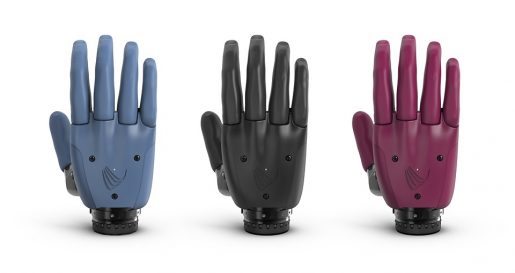What DIYers can teach us about prosthetic care
I frequently see articles highlighting a new prosthetic arm or device built out of hardware store components, Legos, or home 3D printers. These are motivational, feel good stories that connect us to humanity. We want to believe this, but in most cases the reality is very different. I should know – I have made printed arms, we have them in our lab, and we want it to work as well as other prostheses on the market.
But, there’s a dark side and bias at play here. A number of news articles seem to villainize the use and cost of current healthcare options with little consideration for the time, effort and research dollars that went into solving those problems in the first place.
It takes countless hours to modify and create something that can be comfortably worn for 16 hours a day, seven days a week for three to five years. Many current printed prostheses simply do not last, and in many cases the designer/maker doesn’t have a firm grasp of gross anatomy, muscle physiology, psychology, or the other critical building blocks licensed and credentialed prosthetists must hold.
The time has come to move past the villainization of health care providers, and instead both embrace the expertise and the skill of these highly trained individuals, and recognize the innovative spirit of the DIY culture. This perspective will lead to innovative solutions that solve real problems.
As a prosthetist, I am looking for the ultimate measure of quality. I want to see dirt, scuffs, scratches, and smell the sweat that prove to me the prosthesis is not holding patients back from doing anything they want to do. When we as a group embrace this mentality we will be able to leverage both technology and expertise to generate lasting solutions.
Additive manufacturing or 3D printing has been around for more than 40 years, yet these printers and materials are just becoming accessible to the masses. During that same period, we have seen extraordinary advances in prosthetic technology: the introduction of new materials such as gel skin interfaces, polymers, carbon fiber composites, and an array of feet and knees from 4-5 options available in the 1960s to hundreds of different options and millions of different combinations today.
On the printing side, we are embarking on a new revolution as additive manufacturing becomes more accessible, more efficient, and more cost effective. I have been working with printers for several years now and we will be able to do things we never thought possible in the future. But printing alone will not solve the challenges of accessible prosthetic care.
As an engineer, a prosthetist, educator, and avid YouTube DIYer, I closely examine each of these news articles, intrigued by the human spirit and a growing trend. I, like a few others in my profession, embrace the light this shines on our profession and the added visibility.
I am believer and fully expect 3D printing and additive manufacturing to play an important role in my practice moving forward. But for 3D printing in prosthetic care to become truly common practice, it will require the following:
- More trained professionals. We do not have sufficient time, effort, funds or resources to meaningfully address the global need for prosthetic care. We need more qualified providers, orthotists, prosthetists, and other healthcare specialists to meet these demands.
- Style and design matter. 3D printing and other additive manufacturing techniques should be leveraged to personalize care and create a meaningful means of self-expression.
- Pair experienced clinicians with the DIYers. This just might help bridge the gap and create meaningful clinical outcomes, which could truly improve quality of life. MedTech firms should take notice and increase stakeholder engagement in the design and development process.
- Attract more talent to the field. Prosthetic and orthotic care is worth investing in and is a fun problem to consider.
- Teach about the technology. Education programs for prosthetists and orthotists should introduce and train future clinicians to leverage technology to minimize cost burden and enhance the availability of prosthetic care to the underserved.
I believe these ideals can and should occur in the orthotics and prosthetics profession as well as other healthcare specialties. Unfortunately, the media rhetoric tends to put the DIY population at odds with the healthcare providers that know most about this care.
It is time to look past that and leverage skills to create real collaborative breakthroughs that meet the growing demand for these and other healthcare services.
-By Jared Howell, CPO, MS, LPO, FAAOP, director, Center for O&P Clinical Innovation, assistant professor, physical medicine and rehabilitation and the School of Health Professions, and orthotics and prosthetics and health policy scholar in the Center for Medical Ethics and Health Policy at Baylor College of Medicine



